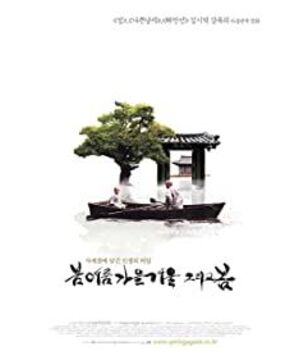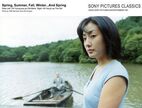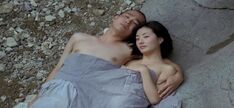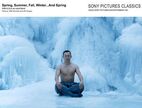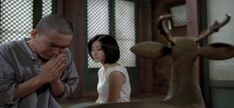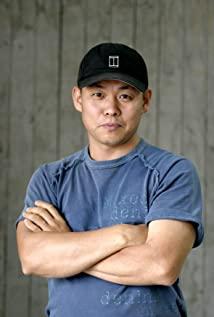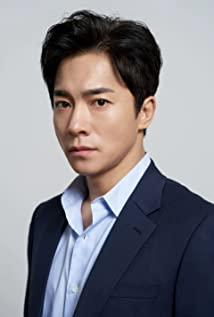The film is a very beautiful and simple film. The simplicity of the work highlights the profound and superb artistic sense. Director Ki-duk Kim not only isolates the core of human nature, but also amazingly understands the scope of human experience. (
)
The film is a work like a gem. The film richly described the themes of silence and violence, divine love and common love, wisdom and indifference, and it was almost perfect. (
)
The film describes the growth process of a monk in the form of a fable, and a large number of images show us the artistic expression of this director who has studied ink and landscape. Simple techniques, silent film-like scene scheduling, the film is processed exquisitely and beautifully. In addition to collecting all the beautiful scenery of the four seasons in Korea, the five major segments are like inter-connected and independent short films, and the structure is complete. The most rare thing is that most of the passages in the film do not require dialogue, but it is quite rare to let the audience not feel dull. (
)
This is about the life of a monk. Ki-duk Kim behind the camera speaks of the passing of life peacefully and vividly. He has always maintained the interest and twists and turns of the story. Instead of instilling empty theories into the audience, he relied on materialized lenses and Buddhist concepts to extract the commonalities between man and nature, and the invisibility of interspersing and blending human nature with animal instincts. Portray. His display of the protagonist’s life process deliberately chopped off the beginning and end and replaced it with the lives of others: the baby at the end of the film is the answer to the protagonist’s childhood sojourn in Buddhism. The old monk’s prophecy and enlightenment of the apprentice’s fate when the protagonist returned to the vulgar suggests that the old monk had a similar life experience with him. The loneliness of the old monk in the autumn and the self-immolation death in safety and detachment will also be the final fate of the protagonist in his later years.
The basic adjustment of the film is rather gloomy, and the only warm hope that remains is Ki-duk Kim's affirmation of the Buddha. The only way to counteract human sins and purify the soul is through salvation from the Buddha. The compassion and kindness of Buddhists are extraordinary and otherworldly, which is in sharp contrast to the sinister and cunning of the world. This is most evident in the middle-aged escape of the protagonist: the protagonist after killing his wife is anxious, irritable, uneasy, and tends to be violent and self-abuse. The master gave him the therapy of "carving the Prajna Heart Sutra", which turned him from a devil into a saint. After his old age, the protagonist returned to the monastery again and devoted himself to doing good to all living beings, embarking on the path of true faith. Under the guidance of the Buddha, he did not understand the world and practiced hard, which is his soul consciousness and repentance for his wrongdoing. The mother who abandoned her baby at the end of the film slips into the ice hole, which is the punishment of the gods and Buddhas to the wicked. It shows the justice and discernment of the Buddha, and also reflects the Confucian thought that good and evil are rewarded. (
)


